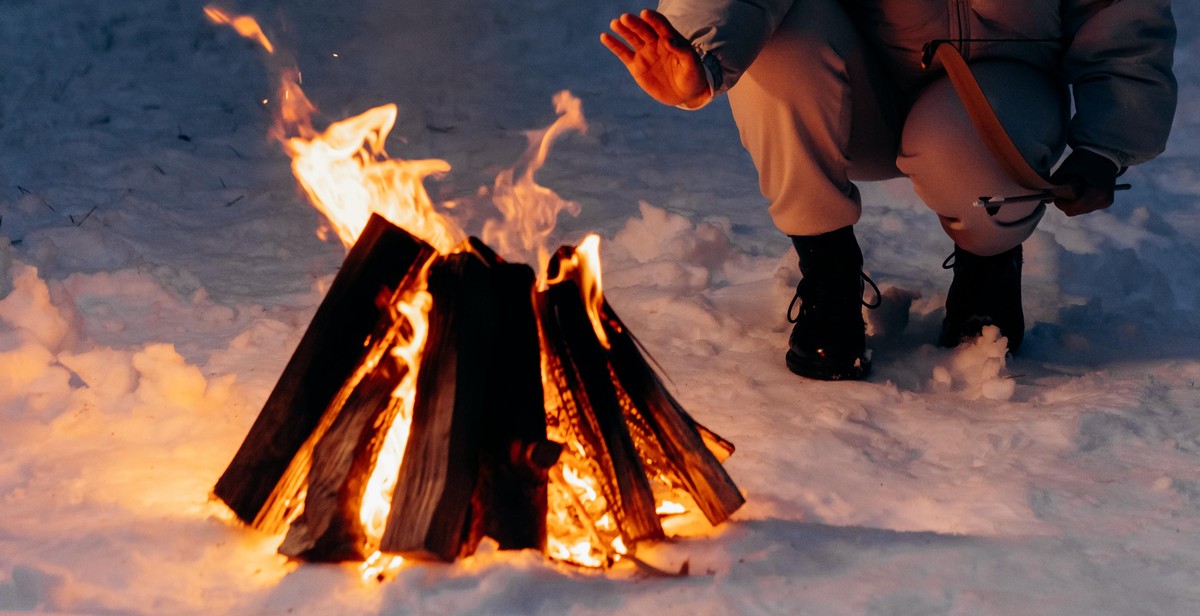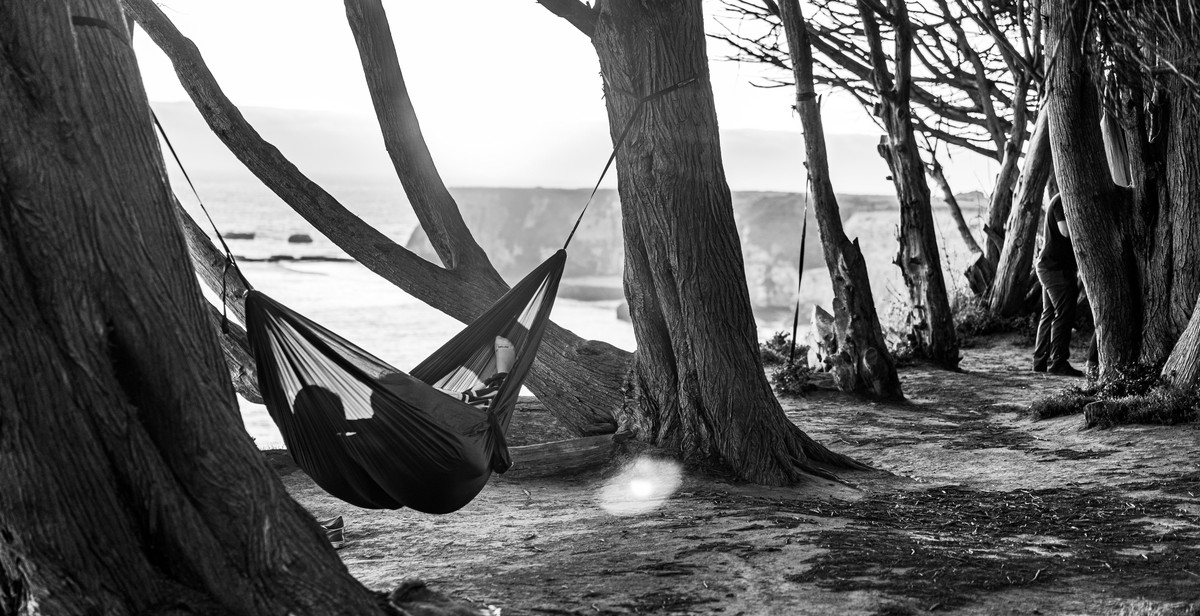Introduction
As an avid hammock camper, I know firsthand how relaxing and comfortable it can be to sleep suspended in the trees. However, when temperatures drop, it can be challenging to stay warm and cozy in a hammock. In this article, I’ll be sharing my tips and gear recommendations for cold-weather hammocking.
The Challenges of Cold-Weather Hammocking
When the temperature drops, hammock camping can become uncomfortable or even dangerous if you’re not prepared. The lack of insulation underneath you can cause your body heat to escape, leading to a chilly night’s sleep. Additionally, cold air can circulate around and underneath your hammock, making it difficult to stay warm.
Tips for Staying Warm in a Hammock
There are several things you can do to stay warm and comfortable in your hammock during cold weather camping trips:
- Choose the right location
- Use a hammock underquilt
- Layer up
- Use a sleeping pad
- Invest in a good sleeping bag
- Use a tarp to block wind and trap heat
Cold-Weather Hammocking Gear Recommendations
There’s a variety of gear available that can help keep you warm and cozy while hammock camping in cold weather. In this article, I’ll be sharing my top gear recommendations, including hammock underquilts, sleeping bags, and more.
| Hammock Gear | Sleeping Gear | Accessories |
|---|---|---|
| Hammock underquilt | Insulated sleeping pad | Tarp |
| Insulated hammock | Winter sleeping bag | Hot water bottle |
| Snugpak hammock cocoon | Double-layered sleeping bag | Hand warmers |

Why Hammock Camping in Cold Weather?
As an avid hammock camper, I can confidently say that hammock camping in cold weather is an experience unlike any other. While many people associate hammocks with warm summer nights, they can actually be used year-round with the right gear and preparation.
Comfort and Convenience
One of the biggest advantages of hammock camping in cold weather is the comfort and convenience it provides. Unlike traditional tent camping, hammocks allow you to sleep off the ground, which can be a game-changer in cold weather. Not only does this keep you away from the cold and damp ground, but it also provides a more comfortable sleeping experience overall.
Additionally, hammocks are incredibly easy to set up and take down, which can be a major advantage when camping in cold weather. With a traditional tent, you need to find a flat surface, clear away any debris, and set up the tent poles and stakes. With a hammock, all you need is two trees and a few minutes to set up your suspension system and tarp.
Better Sleep Quality
Another advantage of hammock camping in cold weather is the potential for better sleep quality. When sleeping on the ground, your body can lose heat through conduction, which can make it difficult to stay warm. In a hammock, your body is suspended in the air, which can reduce the amount of heat lost through conduction.
Additionally, hammocks can provide a more comfortable sleeping position, which can lead to better sleep overall. Unlike sleeping on the ground, which can be hard and uneven, hammocks conform to your body, providing a more supportive and comfortable sleeping experience.
Overall, hammock camping in cold weather can be a great way to stay warm and comfortable while enjoying the great outdoors. With the right gear and preparation, you can enjoy all the benefits of hammock camping year-round.

Tips for Staying Warm in a Hammock
Hammocking in cold weather can be a challenge, but with the right gear and preparation, you can stay warm and comfortable. Here are some tips to help you stay cozy in your hammock:
Choose the Right Hammock and Gear
When shopping for a hammock, look for one that is designed for cold weather use. A double-layered hammock with an insulated layer between the two can help keep you warm. Additionally, you may want to invest in an underquilt to provide insulation underneath your hammock. A top quilt can also be useful for covering yourself while you sleep.
Insulate Yourself from the Cold
One of the biggest challenges of hammocking in cold weather is staying warm from below. To help insulate yourself from the cold ground, consider using a sleeping pad or a reflective blanket underneath your hammock.
Use a Sleeping Bag or Quilt
A sleeping bag or quilt can provide additional warmth while you sleep in your hammock. Make sure to choose one that is designed for cold weather use, with a temperature rating that is appropriate for the conditions you’ll be camping in.
Wear Appropriate Clothing
Wearing warm, moisture-wicking clothing can help keep you comfortable while hammocking in cold weather. Consider wearing base layers, fleece or down jackets, and wool socks to keep warm.
Stay Dry
Staying dry is crucial when hammocking in cold weather. Make sure to bring a waterproof tarp to cover your hammock and protect you from rain or snow. Additionally, be sure to bring a dry change of clothes in case you get wet.
Keep Your Feet Warm
Your feet are especially vulnerable to the cold when hammocking. Bring warm socks and consider using a hot water bottle or hand warmers to keep your feet toasty throughout the night.
By following these tips, you can stay warm and comfortable while hammocking in cold weather. With the right gear and preparation, you can enjoy the beauty of the outdoors all year round.

Cold-Weather Hammocking Gear
When it comes to hammocking in cold weather, having the proper gear is essential to staying warm and comfortable. Here are some of the best cold-weather hammocking gear options:
Underquilts
An underquilt is a must-have for cold-weather hammocking. It attaches to the underside of your hammock and provides insulation from the cold air beneath you. Look for an underquilt with a temperature rating that matches the conditions you’ll be camping in.
Top Quilts
A top quilt is essentially a sleeping bag without a bottom. It’s designed to drape over you while you’re in your hammock, keeping you warm and cozy. Look for a top quilt with a temperature rating that matches the conditions you’ll be camping in.
Sleeping Bags
If you don’t want to invest in an underquilt and top quilt, a sleeping bag can work in a pinch. However, it’s important to note that sleeping bags can compress under your body weight, reducing their insulation properties. Look for a sleeping bag with a temperature rating that matches the conditions you’ll be camping in.
Sleeping Pads
Similar to sleeping bags, a sleeping pad can be used as insulation in a hammock. However, like sleeping bags, they can compress under your body weight. Look for a sleeping pad with a high R-value, which indicates better insulation properties.
Hammock Socks
Hammock socks are essentially a rain fly for your hammock. They create a barrier between you and the cold air outside, and can also help trap warmth. Look for a hammock sock that fits your specific hammock model.
Tarp or Rain Fly
A tarp or rain fly is an essential piece of gear for all hammock camping, but especially in cold weather. It protects you from precipitation and wind, which can quickly chill you to the bone. Look for a tarp or rain fly that’s specifically designed for hammock camping.
- Underquilts
- Top Quilts
- Sleeping Bags
- Sleeping Pads
- Hammock Socks
- Tarp or Rain Fly

Conclusion
With the right gear and techniques, hammocking during cold weather can be a comfortable and enjoyable experience. Remember to choose a hammock with a good insulation system, use an underquilt, and dress in warm layers. Additionally, consider using a tarp or rainfly to protect yourself from wind and precipitation.
Final Thoughts
As someone who has spent countless nights hammocking in various weather conditions, I can attest to the benefits of cold-weather hammocking. Not only is it a unique and peaceful way to enjoy the outdoors, but it can also be a great alternative to traditional camping. By following the tips and using the gear mentioned in this article, you can stay warm and cozy in your hammock even during the coldest months of the year.
Happy Hammocking!
Now that you have all the information you need to stay warm while hammocking in cold weather, it’s time to put it into practice. Remember to always prioritize safety and comfort, and don’t be afraid to experiment with different gear and techniques until you find what works best for you. With a little bit of preparation and a lot of enthusiasm, you’ll be able to enjoy the great outdoors from the comfort of your hammock all year round.
